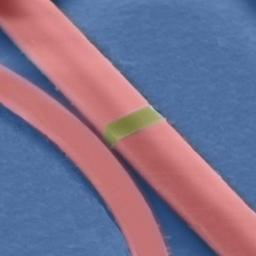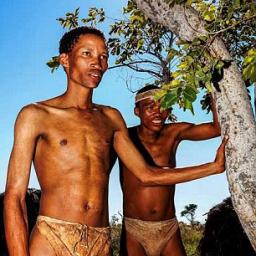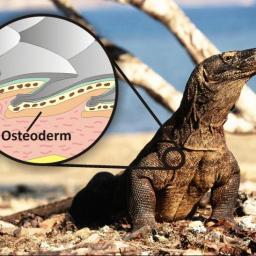
The world's first entirely
light-based memory chip to store data permanently has been developed by material scientists at Oxford University. The device makes use of materials used in CDs and DVDs, and it could help dramatically improve the speed of modern computing. Today's computers are held back by the relatively slow transmission of electronic data between the processor and the memory. There's no point using faster processors if the limiting factor is the shuttling of information to-and-from the memory. The researchers think using light can significantly speed this up.
Read more in
Nature and
Youtube.
A new study finds that rising placebo responses may play a part in the increasingly high failure rate for clinical trials of drugs, but the authors of the study say that the increase in placebo responses occurred only in trials conducted in the United States.
From 1990 to 2013 the pain inhibition experienced by patients in the placebo group increased steadily, reaching an average 30 percent decrease in pain levels by 2013. Similar increases in placebo response have previously been observed in studies of clinical trials of antidepressants and antipsychotic drugs. Those studies, however, didn't pinpoint the U.S. as the source of the trend.
The authors, from McGill University, examined reported features of the clinical trials to determine what factors might be responsible for the changes over time. They found that in the U.S., but not elsewhere, trials are becoming longer (from an average of four-weeks long in 1990 to 12 weeks in 2013) and larger (from an average of fewer than 50 patients in 1990 to an average of more than 700 patients in 2013).
"The data suggest that longer and larger trials are associated with bigger placebo responses," said Jeffrey Mogil, senior author of the new paper. "This, in turn, tends to result in the failure of those trials - since it makes it harder for pharmaceutical companies to prove that the drug being tested is more effective than treatment with a placebo." He and his co-authors note, however, some potentially important differences between the U.S. and other countries. These include the existence of direct-to-consumer drug advertising in the U.S. (New Zealand is the only other country in the world that allows this), the greater spread of for-profit "contract research organizations" in the U.S., and perhaps greater exposure to the placebo concept in popular media in the U.S.
http://www.scienceagogo.com/news/20150906175924.shtml
The new study, published in the Cell Press journal Current Biology, shows that three ancient groups of hunter-gatherers living in different parts of the world without any of those trappings of modern life don't get any more sleep than we do.
'The short sleep in these populations challenges the belief that sleep has been greatly reduced in the 'modern world,'' said Jerome Siegel of the University of California, Los Angeles. 'This has important implications for the idea that we need to take sleeping pills because sleep has been reduced from its 'natural level' by the widespread use of electricity, TV, the Internet, and so on.'
To get a handle on how people slept before the modern era, Siegel and his colleagues looked to three traditional human hunter-gatherer societies: the Hadza of Tanzania, the San of Namibia, and the Tsimane of Bolivia. What they found was a surprising similarity across those three groups. 'Despite varying genetics, histories, and environments, we find that all three groups show a similar sleep organization, suggesting that they express core human sleep patterns, probably characteristic of pre-modern-era Homo sapiens,' Siegel says.
Group sleep time averaged between 5.7 and 7.1 hours. Those amounts are at the low end of durations reported in 'industrial societies.' Although they lack electric lights, none of the groups went to sleep with the sun. On average, they stayed up a little over three hours after the sun went down and woke up before sunrise. It appears that their sleep time may have more to do with temperature than with light.
http://www.dailymail.co.uk/sciencetech/article-3275149/Don-t-blame-Internet-lack-sleep-Researchers-say-hunter-gatherers-no-access-technology-sleep-6-5-hours-night.htmlResearchers have discovered that when hands are poorly washed
airborne germ counts are 27 times higher around air dryers in comparison with the air around paper towel dispensers. This shows that both jet and warm air hand dryers spread bacteria into the air and onto users and those nearby. "These findings are important for understanding the ways in which bacteria spread, with the potential to transmit illness and disease," said Professor Mark Wilcox, who led the study.
Researchers collected air samples around the hand dryers and also at distances of one and two meters away. They found that air bacterial counts close to jet air dryers were 4.5 times higher than around warm air dryers and 27 times higher compared with the air when using paper towels. Next to the dryers, bacteria persisted in the air well beyond the 15 second hand-drying time, with approximately half (48 percent) collected more than five minutes after drying ended and still detected in the air 15 minutes after hand drying.

In a latest study, the researchers at the University of Queensland have discovered an evidence that "giant killer lizards" used to walk on the Australian land nearly 50,000 years ago. The team has concluded that some of the earliest
aborigines may have faced the large predator on their homeland. According to Dr. Gilbert Price, a vertebrate palaeoecologist, the research team was initially shocked to realize the fact that the appearance of the Australia's first human inhabitant overlapped with the existence of the giant apex predator lizards around the same time. The findings of the team were based on the discovery of the lizard fossils.
However, the analysis of the bone has not revealed the name of the species to which it belongs. The researchers say that it might belong to the Komodo dragon which once roamed the Australian land, or it could even belong to the extinct Megalania monitor lizard. The latter was much bigger in size than the Komodo dragon, weighed around 1,000 pounds and grew up to 20 feet long.

Scientists' understanding of the El Nino phenomenon - in which a reversal of warm and cool currents in the Pacific Ocean brings wet weather to America's West Coast and elsewhere while areas used to monsoon rainfall remain dry - is better than ever. But that hasn't helped our ability to accurately predict El Nino years, and of course even prediction does nothing for mitigating the sometimes disastrous effects.
El Nino-watchers at America's National Oceanic and Atmospheric Administration (NOAA) noted worrisome ENSO-related changes in both sea temperature and air pressure earlier this year. They declared the return of the Boy in March. Australia's Bureau of Meteorology decided to wait until May. Such forecasts can be wrong. Despite signs of the phenomenon last year, no monstrous event actually emerged. But during July the surface temperature of the central equatorial Pacific was almost 1C higher than expected, and its equivalent in the eastern Pacific was more than 2C above expectations. Among other things, that puts the temperatures in these areas well above the 26.5C minimum needed for the formation of tropical storms. Right on cue, on July 12th, six such cyclones spun in the Pacific-more than on any previous day in over four decades.
Mike Halpert, the deputy director of NOAA's Climate Prediction Centre, believes the current Nino could be among the strongest since records began in 1950. That one was responsible for 21,000 deaths and $36B in damages on houses, bridges, and culverts.
Time to get out the raincoats and umbrellas?
A recent discovery by UCLA researchers might make a big difference to people who suffer strokes. In the treatment of stroke patients,
time really is brain: A few minutes can mean the difference between patients living independently or suffering debilitating disabilities.
The new device is a
new-generation stent clot retrieval device that aids in the removal of clots responsible for blocking blood supply to the brain. Faster removal of clots results in greatly improved medical outcomes for patients, as even a five-minute delay can negatively affect patients' chances.
The one-year study found that when blood flow was restored to the brain within four hours of the start of a stroke,
80 percent of patients had a very good outcome - meaning that they survived and were able to live independently three months later. The researchers also found that the odds of a poorer outcome increased by one percent for every five minutes that passed between the onset of a stroke and the time when doctors reopened the blocked artery.
While companies look to deliver packages in a matter of minutes using drone technology, NASA engineers are exploring ways to
bring similar "on-demand mobility" to people. In less than a decade, small commuter airlines could be flying electric planes. And as aircraft design and battery technology progress to extend even greater ease of use to the public, the sky would literally become the limit.
A key technology that NASA and its commercial partners are developing to help drive the future toward such personal air vehicles, as well as vastly improve general-aviation aircraft and commercial delivery services, is called "distributed electric propulsion." It's a rapidly evolving technology that Moore says is the biggest shift in aerospace technology since the invention of the turbine engine. By using battery-powered motors to turn compact propellers distributed along an aircraft's wing, he said, a plane becomes easier to handle, lighter, less noisy and more environmentally friendly. Demonstrator tests are showing as much as a 500 percent reduction in the energy needed to perform a high-speed cruise. It can also perform better in a tricky vertical take-off or landing.
Despite the immense potential of solar energy, at present, roof-mounted photovoltaic panels are able at best to capture about 20% of the available energy. And that despite research that has led to gains! To improve energy generation, you either increase solar panel efficiency, or increase their coverage. Enter a Silicon Valley startup named "Ubiquitous Energy."
Ubiquitous Energy produces
transparent solar cells using an organic chemical process they call "Clearview Power Technology." They claim their panels cost less than traditional tech and can be built 1000x thinner than a human hair. The system captures ultraviolet and infrared light and lets the rest pass through as it would normally.
National Geographic has a look at the technology here.Is this an important step forward in solar power generation, or does adding windows to the mix constitute a gimmick? How do we get people more interested in solar energy?
[Ed. Note: the article image chosen here is of an invisible solar panel placed over the entirety of the text.]
Native to the forests of Borneo, Nepenthes hemsleyana feeds on bat guano, which provides the plant with all the nutrients it needs, minus the hassle of digestion. To that end, N. hemsleyana has developed
special structures that reflect bats' ultrasonic calls back to them - an ability that helps the plant attract bats to roost in its pitcher so that it can feast on the animal's feces, a new study has found. The signals are specific to the bat species Kerivoula hardwickii, making it easier for the bats to find their partner plant.
Unlike its carnivorous cousins, N. hemsleyana is not especially adept at catching insects. Yet scientists noticed that it somehow manages to thrive. Pursuing the mystery, Schiner and his team discovered that N. hemsleyana provides some insect-eating bats with a spacious, stable, and parasite-free roosting spot. In return, the bats fertilize the plant with their feces, the researchers discovered. "Carnivorous plants in general have already solved the problem of nutrient deficiency in a very unusual way by reversing the 'normal system' of animals feeding on plants. It is even more astonishing that in the case of N. hemsleyana the system is taking a new turn," Dr. Schiner said.
 The world's first entirely light-based memory chip to store data permanently has been developed by material scientists at Oxford University. The device makes use of materials used in CDs and DVDs, and it could help dramatically improve the speed of modern computing. Today's computers are held back by the relatively slow transmission of electronic data between the processor and the memory. There's no point using faster processors if the limiting factor is the shuttling of information to-and-from the memory. The researchers think using light can significantly speed this up.
The world's first entirely light-based memory chip to store data permanently has been developed by material scientists at Oxford University. The device makes use of materials used in CDs and DVDs, and it could help dramatically improve the speed of modern computing. Today's computers are held back by the relatively slow transmission of electronic data between the processor and the memory. There's no point using faster processors if the limiting factor is the shuttling of information to-and-from the memory. The researchers think using light can significantly speed this up.

